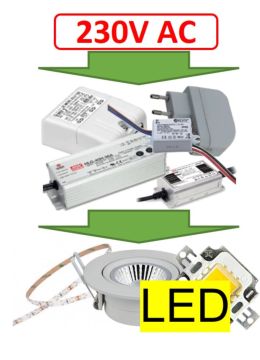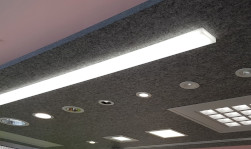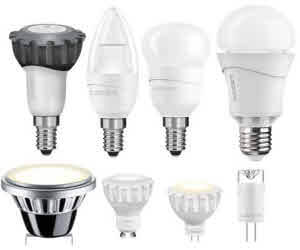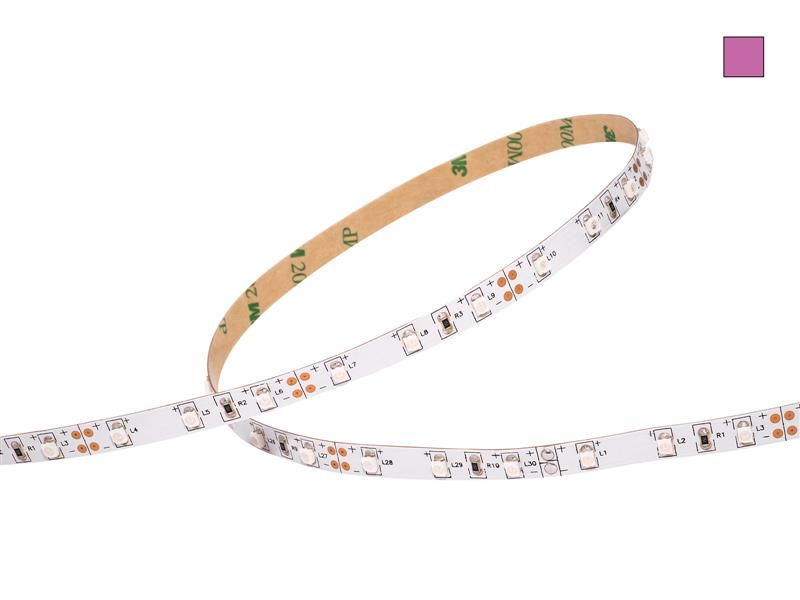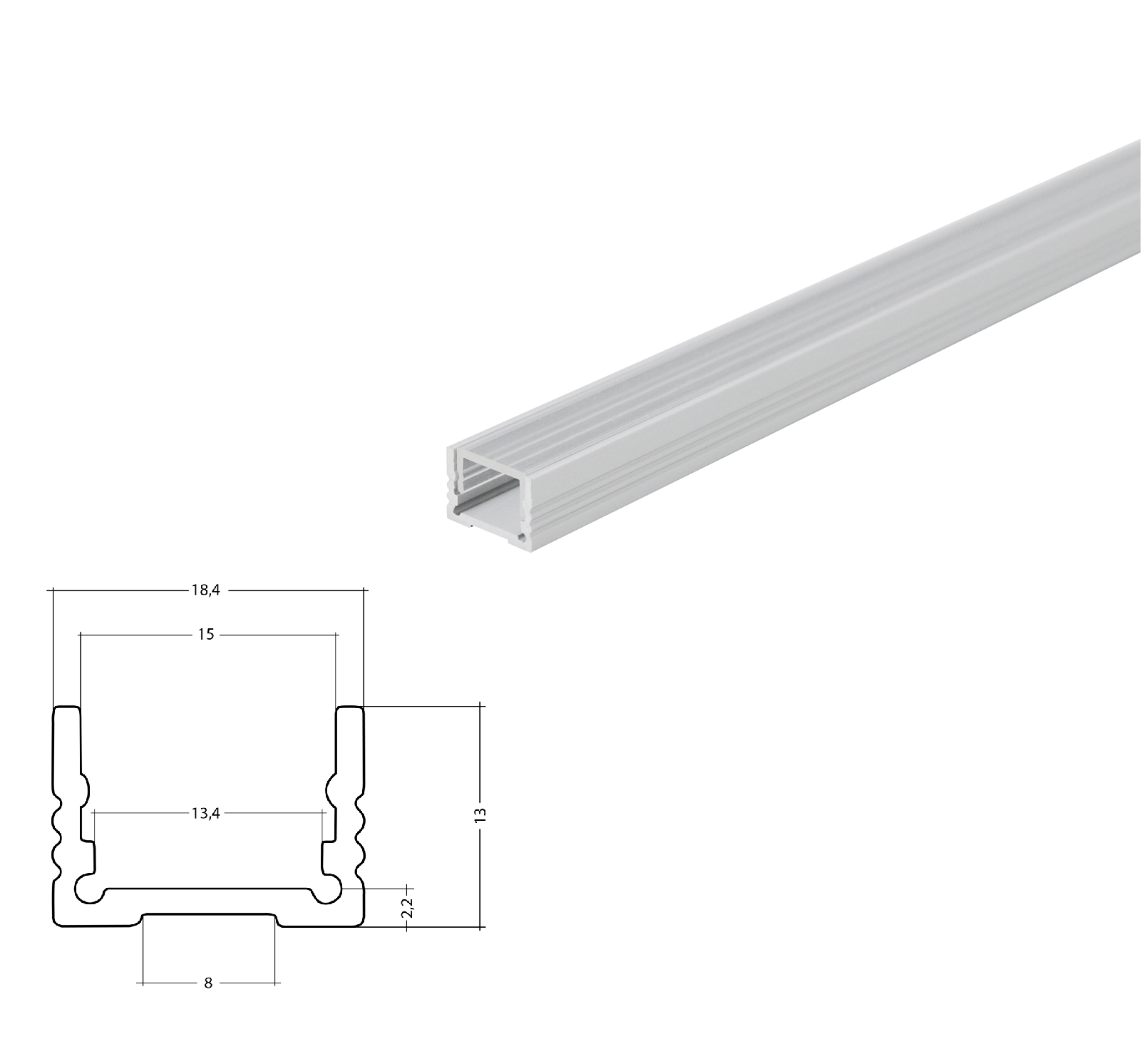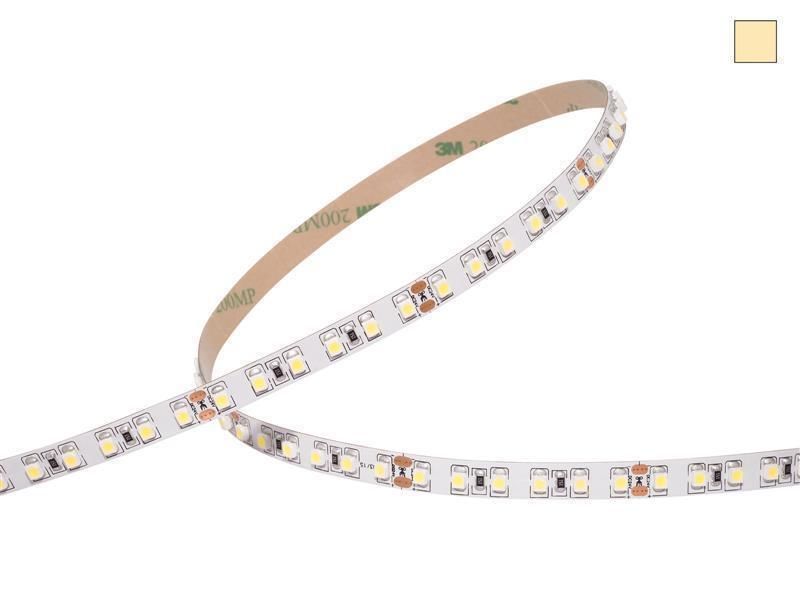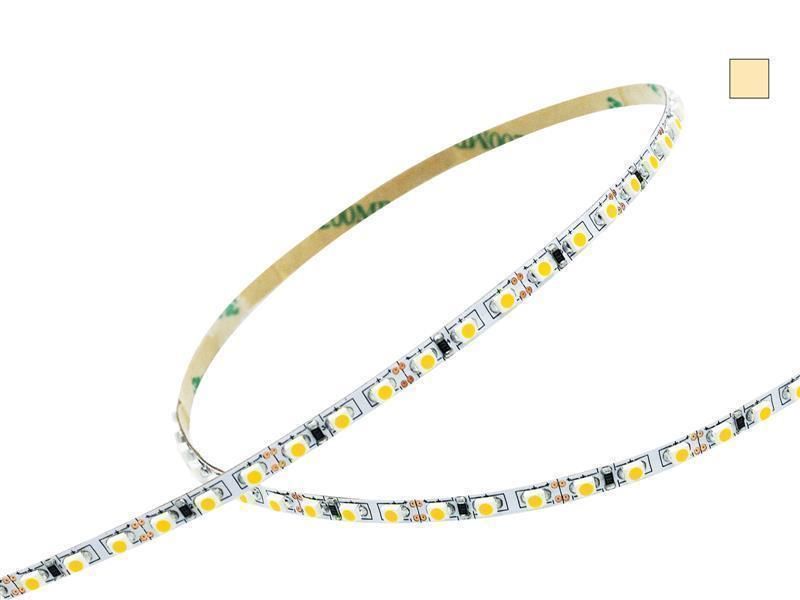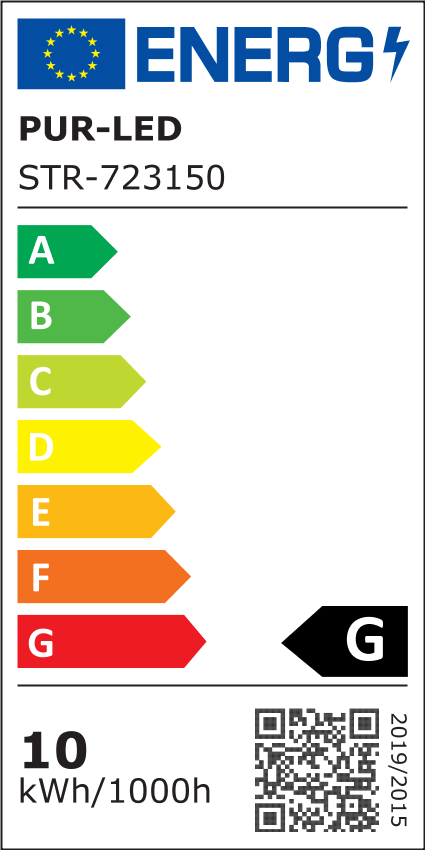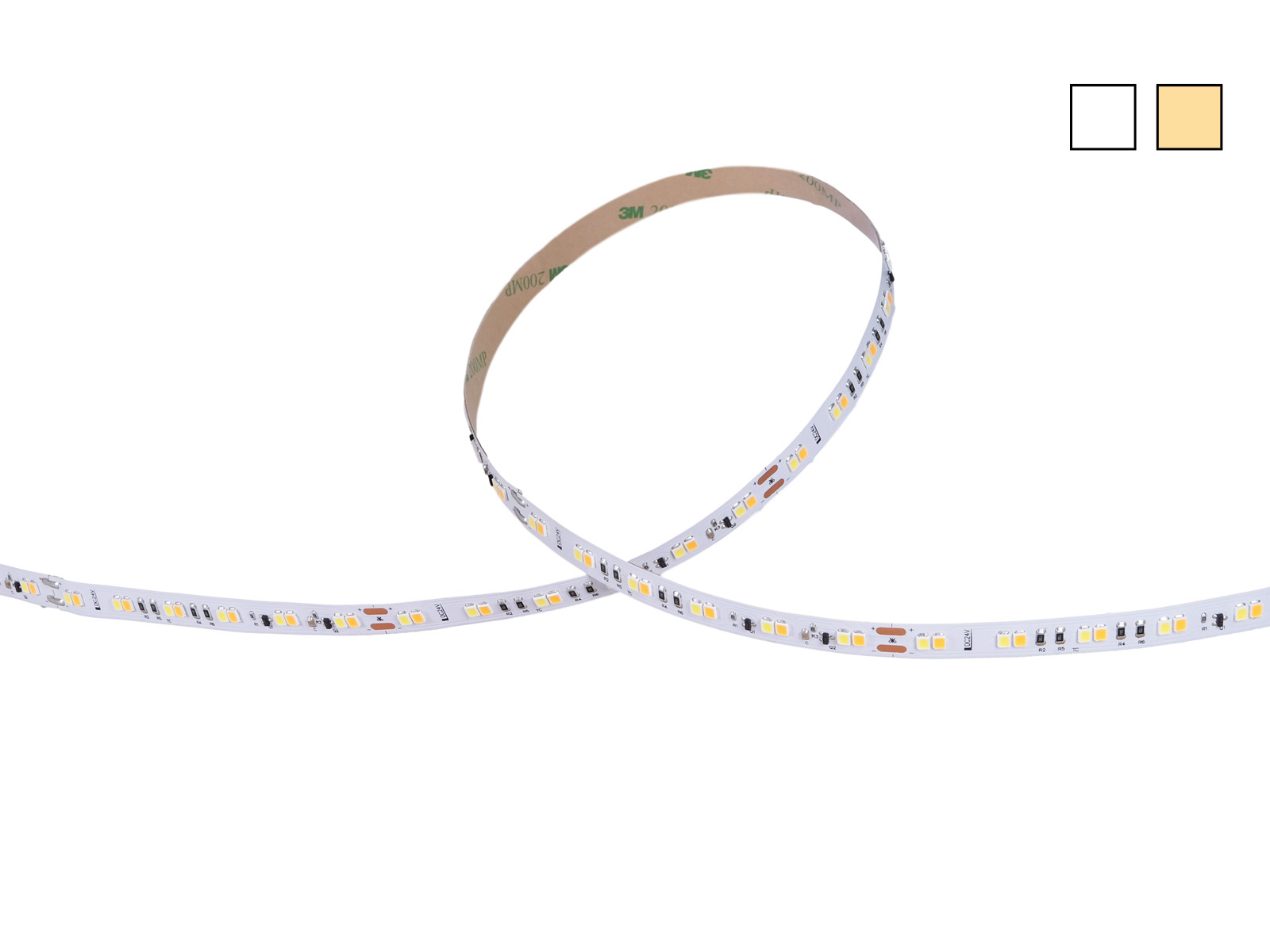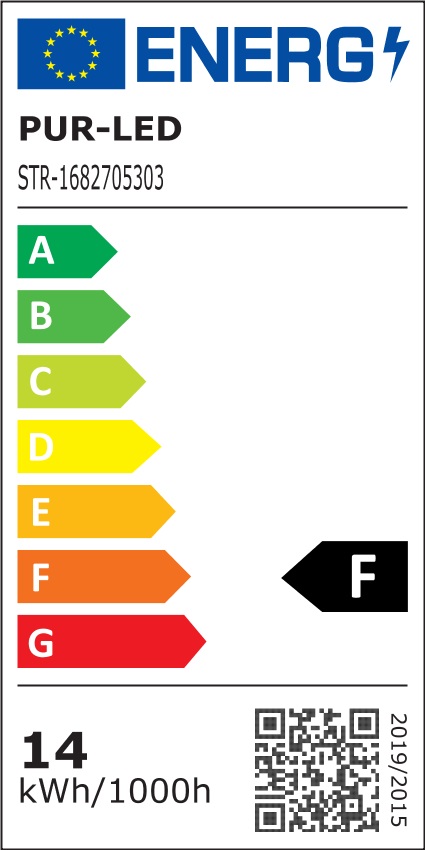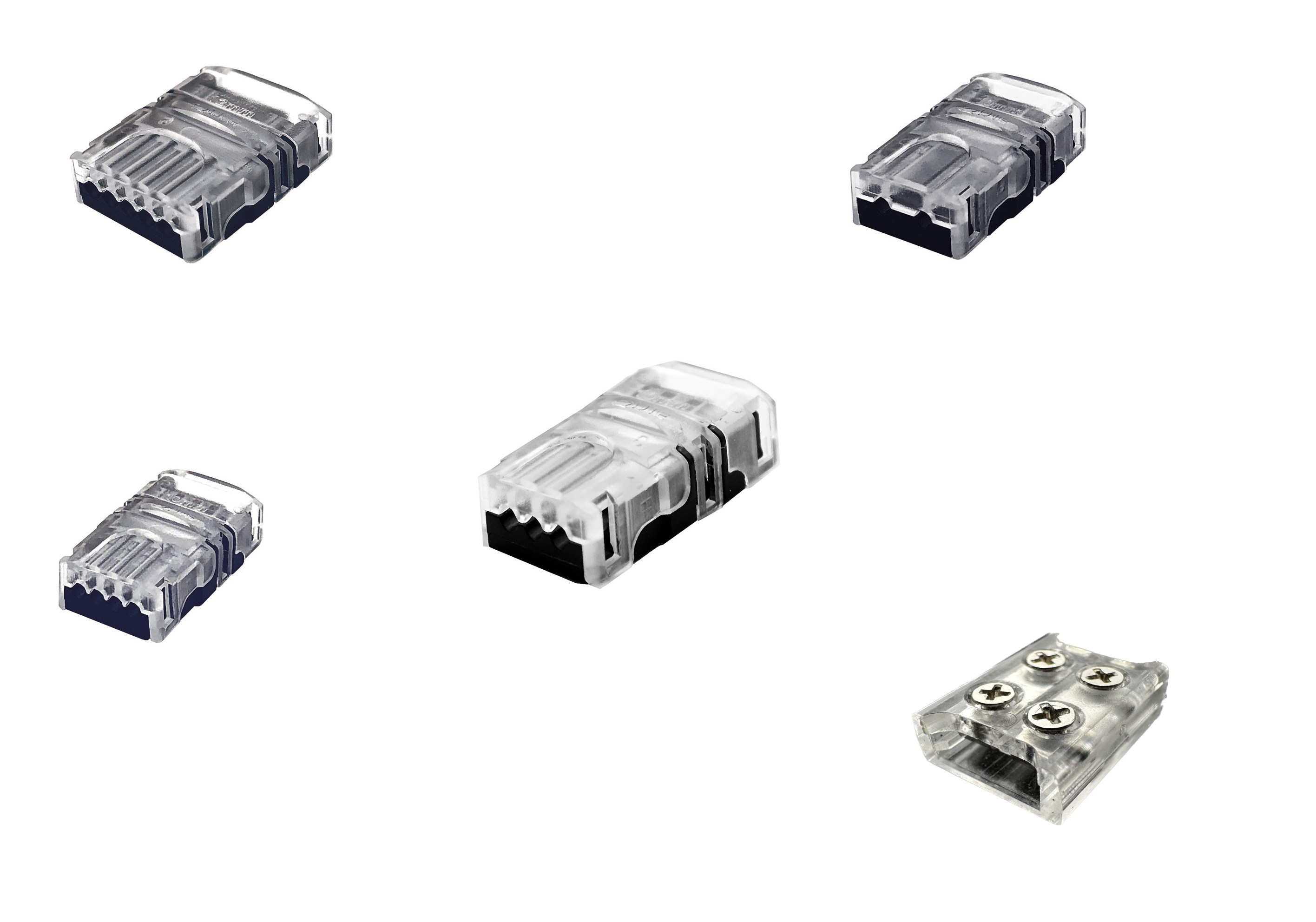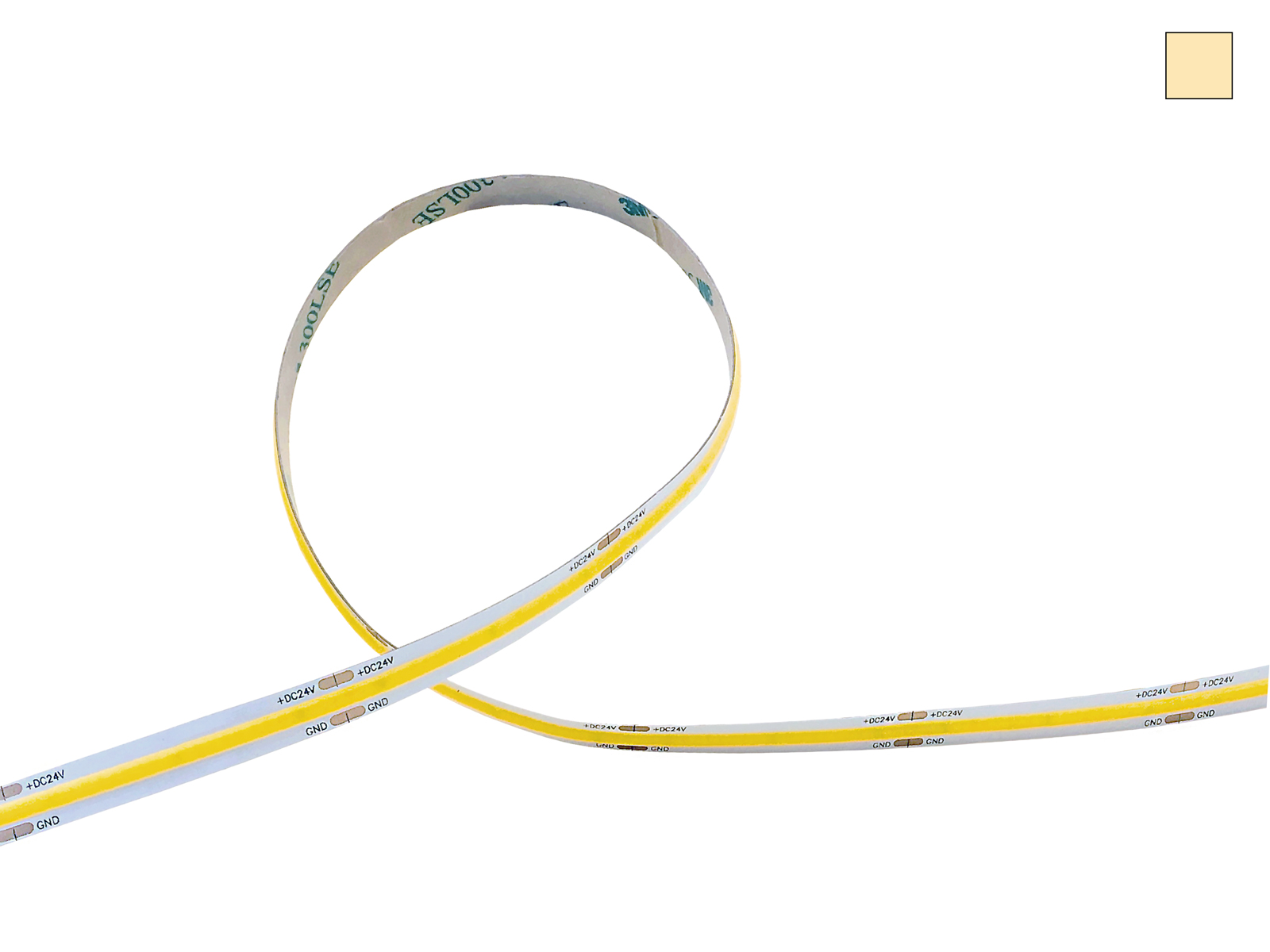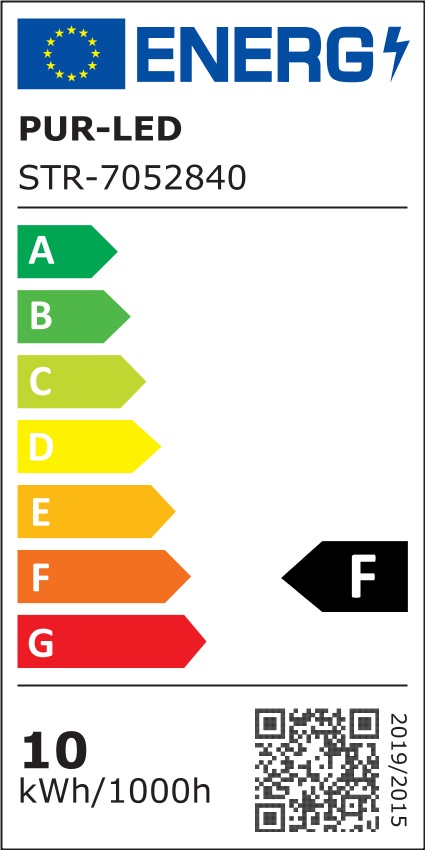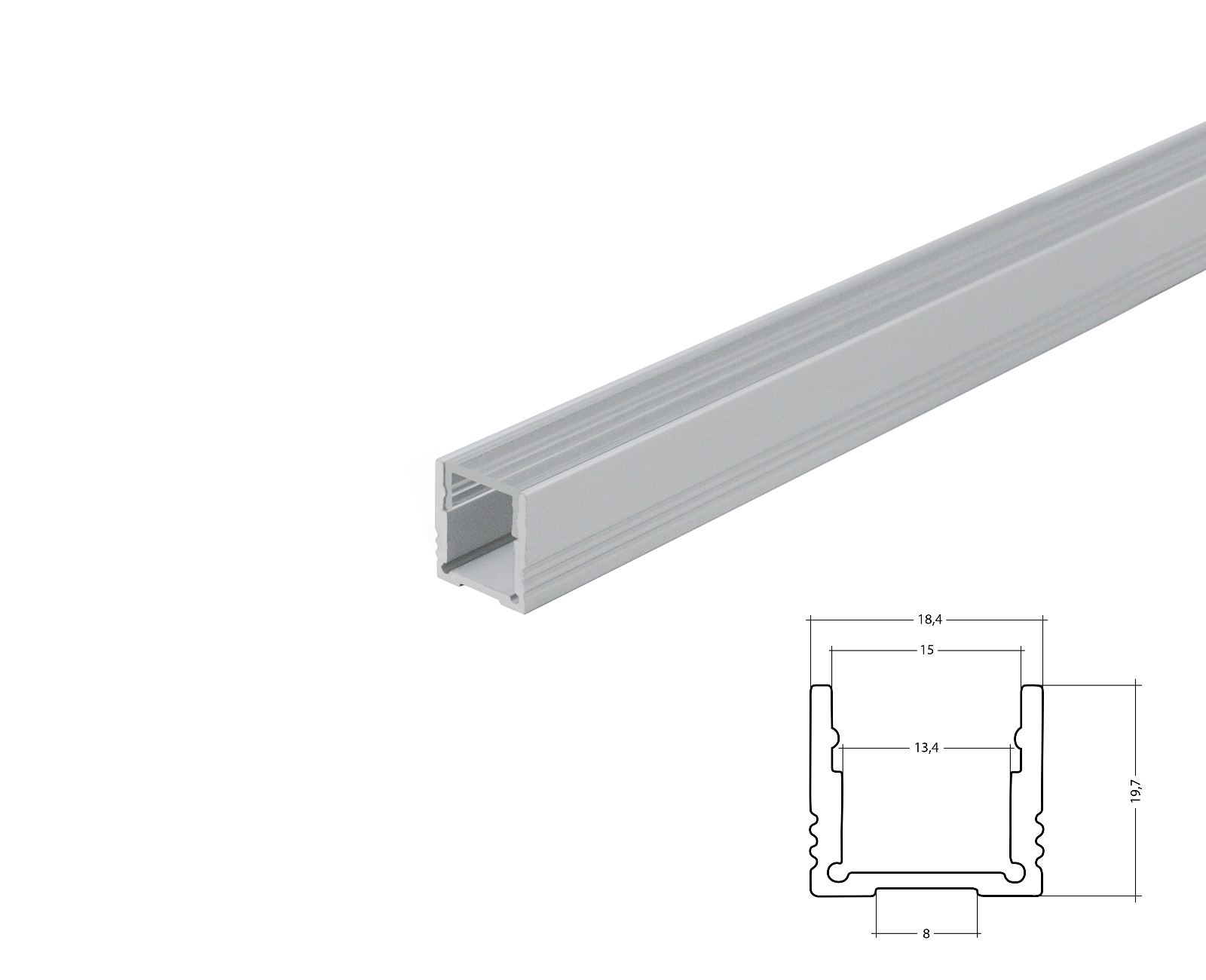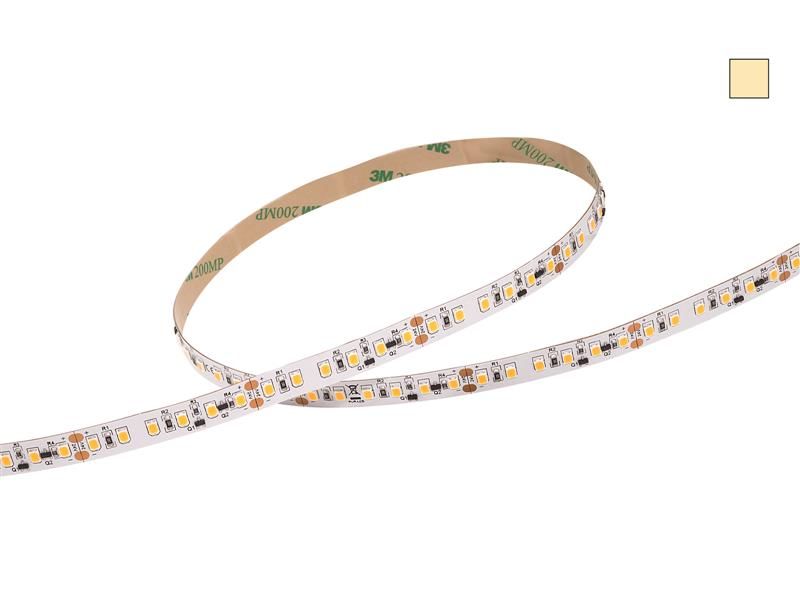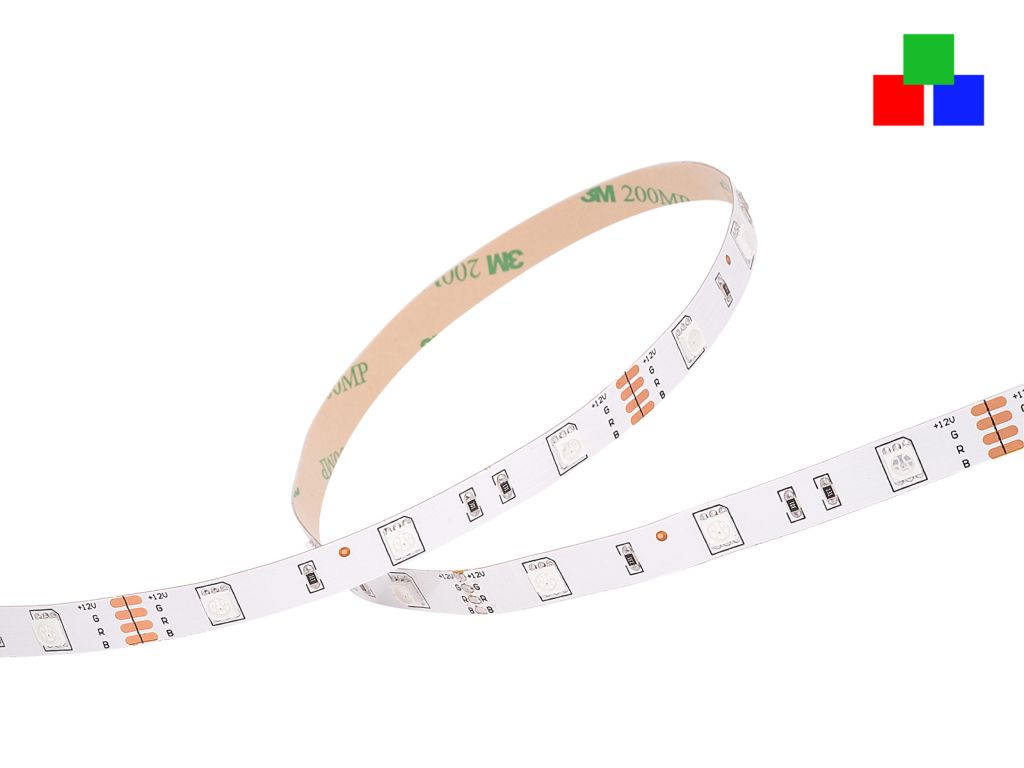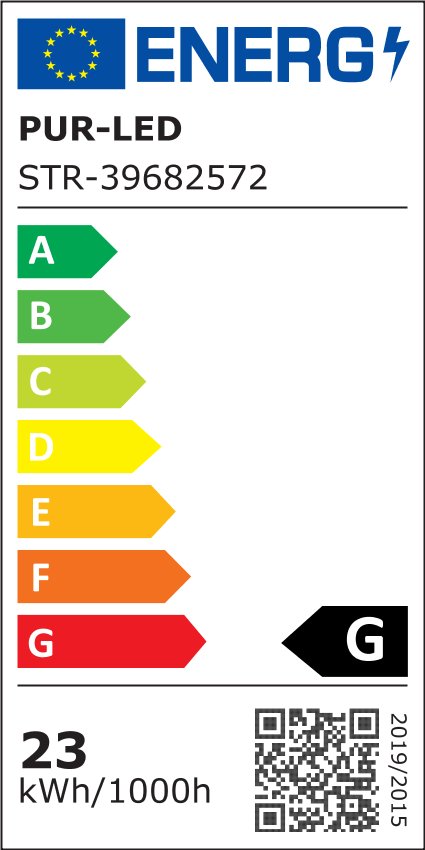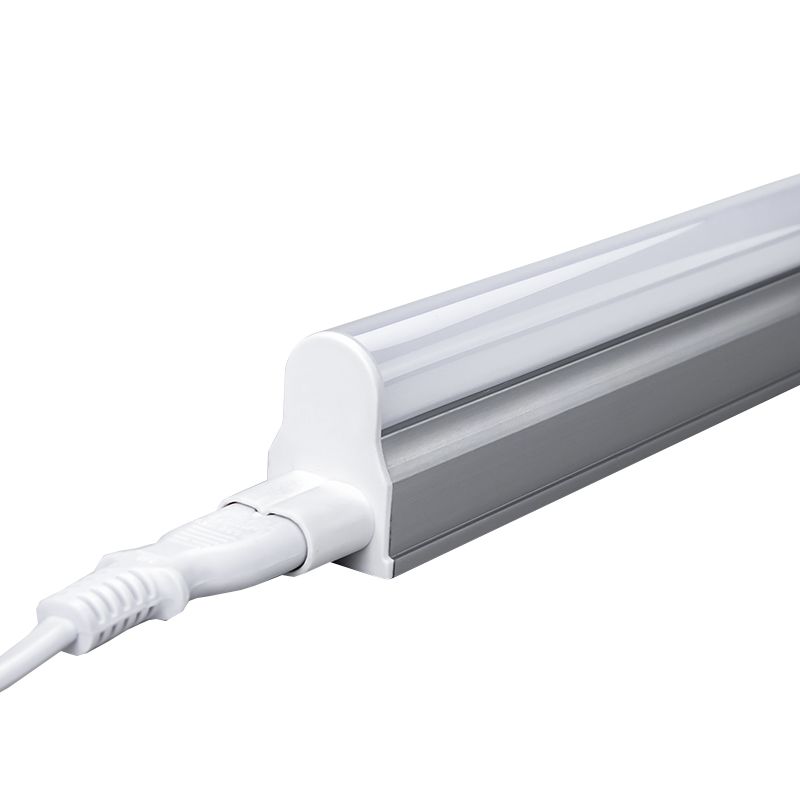Why LED strips are a good choice for professional lighting solutions
When looking for professional lighting solutions, high-quality LED tapes are a first-class choice. They offer remarkable energy efficiency, which reduces electricity costs while helping to protect the environment. Thanks to their exceptional flexibility, LED tapes can be seamlessly integrated into different environments - whether for accentuated backlighting or as a main light source. The impressive variety of colors and the ability to adjust the brightness as needed allow for a customized atmosphere for any room. LED light strips also impress with their sustainability, as they are free from harmful substances and can be recycled at the end of their long service life.
To help you find the right product simply and easily, we have put together a guide to the most frequently asked questions.
Overview
What are the advantages of using high-quality LED strips?
What should I look out for when buying LED strips?
Which LED strip design is right for me?
Different types of LED strips and their areas of application: Which version should I choose?
What light color do I need?
What supply voltage is required for the use of LED tapes?
What mounting density of the LED strip light makes sense?
How bright does my LED stripe need to be?
How do I calculate the power of the LED power supply unit for my LED ribbons?
Our expert tip for installing and maintaining LED strips in professional environments
What are the advantages of using high-quality LED strips?
High-quality LED tapes offer a wealth of advantages for professional lighting solutions. They are energy-efficient and have a long service life, which saves costs. The flexibility of the LED light strip makes it easy to install in different environments. In addition, LED strip lights offer an impressive variety of colors and brightness levels that can be adjusted for any mood or event. The even light distribution of the LED tapes means there are no shadows, which ensures precise lighting. LED light strips are also environmentally friendly as they consume less energy and contain no hazardous substances. With their robust design, they are suitable for both indoor and outdoor applications and prove to be a reliable option for permanent lighting concepts.
Thanks to the large selection of designs, light colors and supply voltages, you are guaranteed to find the right product for every application in our online store. You can also benefit from our expert advice.
What should I look out for when buying LED strips?
When buying LED Strip lighting, you should pay attention to quality and specifications to find the best lighting solution for your project. Check the brightness, specified in lumens, and the color temperature, measured in Kelvin, to create the desired atmosphere. Also important is the IP protection class, which tells you how well the LED rope is protected against moisture and dust - essential for use in outdoor areas or damp rooms. Pay attention to the number of LEDs per meter, as a higher density usually means a more even light distribution without dark spots. You should also consider the possibility of dimming so that you can adjust the intensity of the light as required. Quality manufacturers also guarantee a longer service life and better color fastness of the LED light strips.
Which LED strip design is right for me?
There are 2 different basic designs to choose from: rigid and flexible.
| Flexible LED strips | Particularly suitable in places where the LED strip has to adapt to curves or other curved contours. |
| Rigid LED strips | Suitable for places where flexible strips cannot be fitted or where precise straight mounting is required. Rigid LED rope are also easier to screw to the substrate, which ensures an even more stable connection to the mounting location. |
Different types of LED strips and their areas of application: Which version should I choose?
simple LED stripe provides uniform lighting and is ideal for accent lighting in living spaces or for decorative purposes. RGB LED strips, on the other hand, enable a colorful play of light and are perfect for party rooms or event venues. For more sophisticated lighting solutions, there are LED light strips with a high lumen count, which are ideal for work areas or business premises where bright light is required. Waterproof LED light strips are ideal for outdoor areas or damp rooms as they can withstand the elements. Dimmable LED strips allow the brightness to be individually adjusted, creating a pleasant atmosphere. In professional settings, LED strips with special color temperatures are often used, e.g. in photo studios to provide lifelike illumination.
In general, indoor LED strips can be used anywhere where there is no risk of the LED strip coming into contact with splash water or other liquids.
As soon as there is a possibility of the LED strip coming into contact with moisture, the outdoor IP67 version is recommended.
Another advantage of the outdoor version is the smooth surface of the LED strip, as individual LEDs do not protrude due to the waterproof coating.
What light color do I need?
The light color, also known as the color temperature, is specified in Kelvin. The higher this value, the colder (bluish) the light. Lower values produce a warmer (more yellowish) light.
In general, only one recommendation can be made here.
- For living rooms, a warmer color temperature similar to incandescent light with approx. 2700 Kelvin is recommended.
- Neutral white light with approx. 4000-4700 Kelvin is suitable for workspaces, offices and surgeries, as this also promotes concentration.
- Accent lighting and colorful effect lighting can be achieved with RGB LED strips. The color can be freely adjusted here.
- LED strips in RGB-W design are the most flexible solution, as an additional white LED can be used not only to set accents but also to fulfill lighting tasks.
What supply voltage is required for the use of LED tapes?
This is reflected in the length restriction. The higher the supply voltage, the longer an LED tape can be.
The length restrictions can be found in the data sheets of the respective strips.
12V DC is usually used for low wattages. For medium to high wattages, however, 24V DC is often used. For long LED tapes of up to 30m in length, very efficient strips with 36V DC supply voltage are used.
What mounting density of the LED strip light makes sense?
The higher the LED/m mounting density and therefore the number of LEDs per meter, the more uniform the light output of the LED stripe. Particularly with reflective surfaces, it is advisable to select a higher mounting density to achieve homogeneous light distribution. When using diffuse cover profiles, a mounting density of at least 30 LEDs/m is recommended.
How bright does my LED stripe need to be?
As a rough guide:
- 100-300 lm/m - color effects/ambient lighting, not for room lighting
- 600-1000 lm/m - can already be used for room lighting
- over 2000 lm/m offers maximum brightness for the highest requirements
The specifications always refer to one meter.
As a rough guide, without taking external factors into account, 100 lumens is roughly equivalent to a 10W light bulb.
We will be happy to advise you on the question of brightness in particular, as several factors need to be taken into account here. What color temperature should be used, how strongly do the surfaces reflect, what colors do the surfaces have, is an aluminum profile required for cooling, how long should the LED strip be, is dimming desired? Discussions often result in completely new and affordable solutions.
How do I calculate the power of the LED power supply unit for my LED ribbons?
Basically it is very simple. The LED ribbons have a power rating e.g. 11W/m. If 10m are installed, the total power is 110W. But attention
Special feature for multi-channel LED stripes e.g. RGBW:
Please read the data sheet carefully. The power per color is not always identical. For example, RGB can be specified with 7W/m, but the white channel with 10W/m.
This is important if, for example, the RGBW dimmer reaches the limit of its current carrying capacity.
This is explained with a LED tape with 12V and assumed power as described here.
The dimmer can e.g. per channel 6A at 12V, that would be per channel 72W. So it would be no problem for RGB to operate a length of 10m, but due to the 10W/m at the white channel max. connectable length is limited to 7m.
Our expert tip for installing and maintaining LED strips in professional environments
When using LED light tapes in professional environments, correct installation and maintenance are crucial for longevity and performance. Here are some tips to help:
- Planning: before installation, consider where the LED stripes are to be placed. Bear in mind that some LED tapes need to be specially protected for outdoor use.
- Prepare the surface: The surface should be clean, dry and smooth so that the LED stripes adhere optimally.
- Installation: Ensure proper fastening and avoid sharp bends that could damage the LED strips.
- Connection: Ensure that the power supply is sufficient and stable to avoid overloading.
- Care: Clean the LED light strips regularly with a dry cloth to remove dust and dirt that could reduce the luminosity.
By following these tips, you will ensure an efficient and long-lasting lighting solution.
Do not hesitate to send an inquiry to our experts. We will be happy to advise you.
You can also find more information on frequently asked questions and the appropriate answers in our FAQ on the subject, among other things.
LED project with LED strips planned?--> Click here for the non-binding check and inquiry form.
Still questions about LED project planning?
Then this non-binding inquiry form will certainly help.

